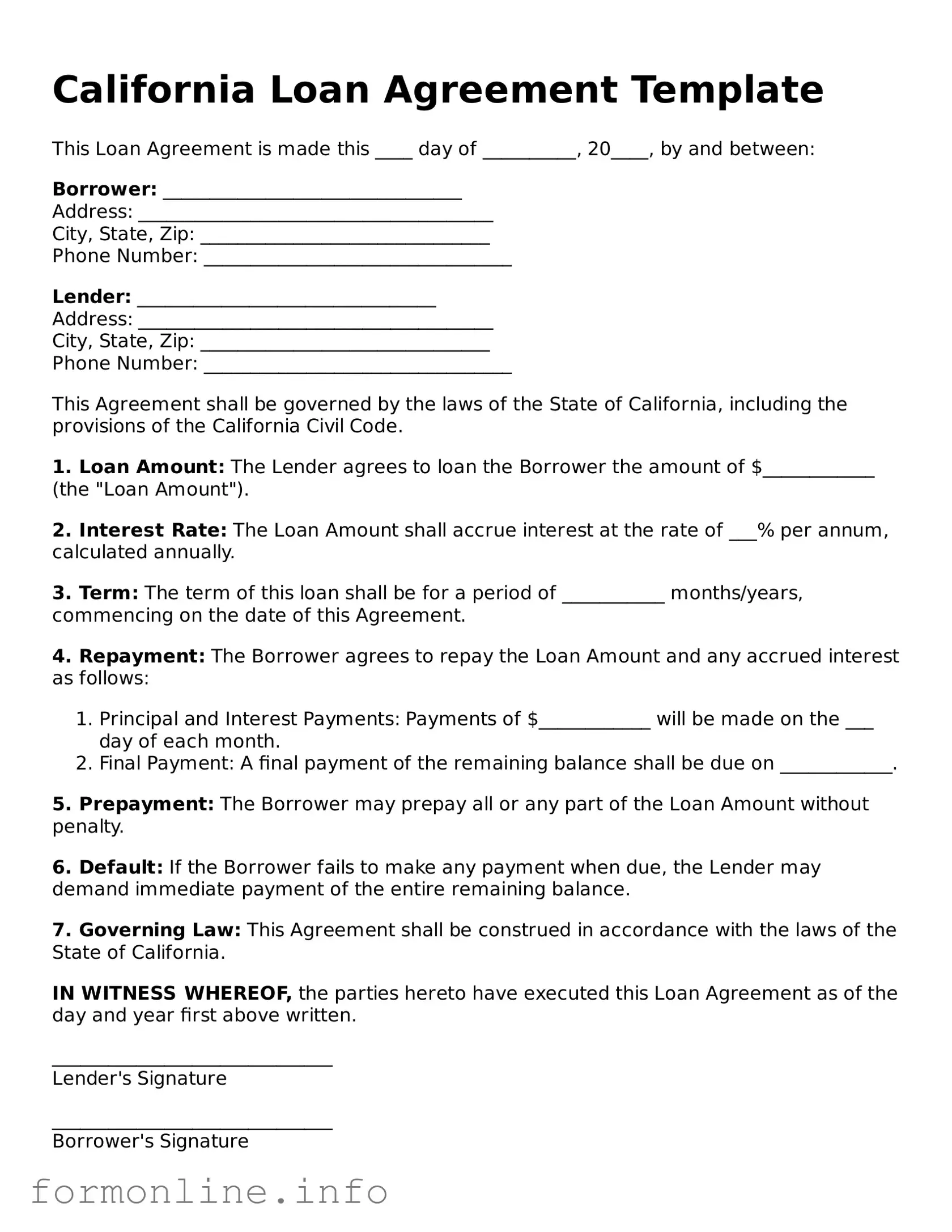California Loan Agreement Template
This Loan Agreement is made this ____ day of __________, 20____, by and between:
Borrower: ________________________________
Address: ______________________________________
City, State, Zip: _______________________________
Phone Number: _________________________________
Lender: ________________________________
Address: ______________________________________
City, State, Zip: _______________________________
Phone Number: _________________________________
This Agreement shall be governed by the laws of the State of California, including the provisions of the California Civil Code.
1. Loan Amount: The Lender agrees to loan the Borrower the amount of $____________ (the "Loan Amount").
2. Interest Rate: The Loan Amount shall accrue interest at the rate of ___% per annum, calculated annually.
3. Term: The term of this loan shall be for a period of ___________ months/years, commencing on the date of this Agreement.
4. Repayment: The Borrower agrees to repay the Loan Amount and any accrued interest as follows:
- Principal and Interest Payments: Payments of $____________ will be made on the ___ day of each month.
- Final Payment: A final payment of the remaining balance shall be due on ____________.
5. Prepayment: The Borrower may prepay all or any part of the Loan Amount without penalty.
6. Default: If the Borrower fails to make any payment when due, the Lender may demand immediate payment of the entire remaining balance.
7. Governing Law: This Agreement shall be construed in accordance with the laws of the State of California.
IN WITNESS WHEREOF, the parties hereto have executed this Loan Agreement as of the day and year first above written.
______________________________
Lender's Signature
______________________________
Borrower's Signature
